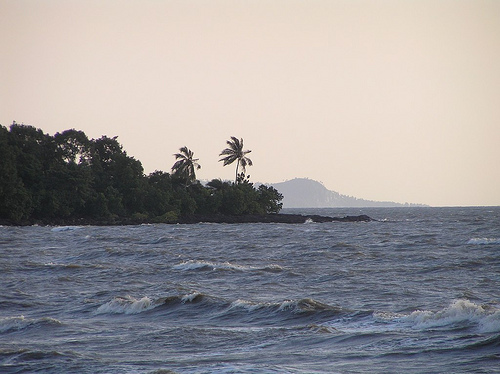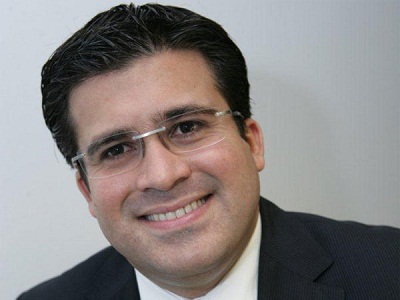This is the seventh post in a series that intends to examine the ICT environment in metropolitan areas of Africa that receive relatively little publicity and lack ICT framework. These cities are often overshadowed by Cape Town, Johannesburg, Cairo, Nairobi, Accra, and Lagos but still have a bright future – albeit with a few additional hurdles to clear.
 Conakry, Guinea {flickr: Jeff Attaway}
Conakry, Guinea {flickr: Jeff Attaway}
I say loud and clear: poverty and underdevelopment in the Republic of Guinea does not to have to be our destiny.” – Alpha Condé, Dec 2, 2010
Conakry, with a population of approximately 2 million, is one of the 30 most populous cities in Africa. Typical of many geographically smaller nations, a large share of the nation resides in the capital. In Guinea’s case, roughly one-quarter of the population lives in Conakry.
Despite telecoms competition and a coastal location, Conakry has lacked true broadband and does not have adequate electricity. Years of political instability, distrust, and sporadic violence have understandably made Internet access less important than human safety. As a result, few Guineans are producing (and accessing) local content. There have been no publicized BarCamps, hackathons or tech meetups, but a blogging event did attract 10 intrepid Guineans earlier this year. Furthermore, neighboring Guinea-Bissau, Senegal, Mali, Sierra Leone, Liberia, and Côte d’Ivoire have not worked with Guinea in earnest to bring greater information access at lower costs. Many of these nations have limited ICT access as well.
As expected, an in-depth search of the Internet turns up an extremely limited number of ICT endeavors and reports from the past few years. Out of the limited public information available on the Internet, here are some important points of information to know about Conakry’s ICT progress:
- 95,000 Internet subscribers as of June 2010 in Guinea, with the majority expected in Conakry. Even if all were in Conakry, the Internet penetration rate would be one subscription per 20 people. {IWS}
- 39,000 Facebook users suggests 2% penetration assuming all users are in Conakry (which is not the case). However, this statistic suggests that a substantial share of Guinean Internet users have a Facebook account. {Socialbakers}
- Only 37 top-level domains (.gn). {Webhosting.info}
- WiMAX is offered by Areeba, but rates are high. {Areeba}
- Only 2G service. 3G not yet planned. {ITU}
- Gateway Communications has assisted Intercel Guinea and ETI SA on with inbound and outbound voice and cellular backhaul services since 2010. Gateway also supplies equipment and satellite capacity to ETI SA, the main ISP in Guinea, supplying WiMAX and ADSL and focusing currently on business customers. {IT News Africa}
- Mobile penetration rate estimated near 31% in September 2010. {MNO Directory}
- Although Internet cafes exist, regular electricity poses a major challenge. Generators suffice in some instances at night when power is scarce, but the end-user pays more as a result. {BBC}
- Five mobile operators exist. Orange Guinée manages a backbone network between Conakry and Labé (200 miles). A Conakry/Mali network is under construction. Moreover, Orange is currently the only operator with fiber optic access and has offered broadband since late 2009. {Orange}
- The ACE cable recently landed in Conakry and will go live next year. {PRI}
- In 2007, Université de Conakry had a campus network maintained by a fibre optic backbone with VSAT access. 10 PCs served 1,000 students. {WorldBank}
- Conakry has hosted at least one blogcamp. Very few blogs exist within Guinea (there were as few as 3 in 2010), but there is a general desire for people to have their voices heard. Attempts are being made to create a Guinean blogosphere outside of Conakry. {Global Voices}
Conclusion:
Conakry’s online future is promising, although Guinea as a whole faces even greater challenges. The ACE landing in Conakry is a major milestone in Guinea’s Internet timeline and will bring much-needed international capacity to the capital. Efforts to encourage blogging, like the events organized by Fode Sanikayi Kouyaté, are promising as well. Guinea great needs local content to not only increase demand for Internet services, but also to put and end to corruption. All blogs are currently hosted on Blogspot or Mondoblog – a sign that web innovation is still in its infancy. One would expect more self-hosted domains before a tech hub or app development appears. The rise of mobile connectivity adds more optimism in a country lacking reliable electricity and fixed-lines. Presumably, devices can charge during periods of electricity during the day or solar kiosks can charge phones at all hours. Then, the challenge becomes powering the cell towers during blackouts.
Outside of Conakry, broadband infrastructure is nearly non-existent, but plans to connect Guinea with both the ACE cable and the West African backbone could help add robust service. Mobile will no doubt be the method of accessing the Internet in these regions, but again, electricity is the lowest common denominator. Additionally, an updated ICT policy would serve Guinea well (the current one dates to 2002-2004).
Of course, it goes nearly without saying that Guinea’s greatest challenges are with the government. Complete civilian control may have officially arrived, but corruption and violence still plague daily life. Successful public-private partnerships require mutual trust. As such, there will only be limited Internet progress until the Guinean government can respect the basic needs of its citizens. For now, Guinea seems to be at a point where greater Internet access (ie. citizen journalists who speak out against injustice to a growing local and international audence) will hurt the Condé regime.
In short, the Internet has the potential to solve societal instability in Guinea. The government would be wise to place an emphasis on ICT development. Not only would such efforts strengthen the economy, but the initiative would also earn public trust. Greater government accountability would also presumably decrease the threat of violence, thus enabling greater online participation. Of course, it will take someone to convince Guinea’s leaders of the economic benefits of ICT…


















































